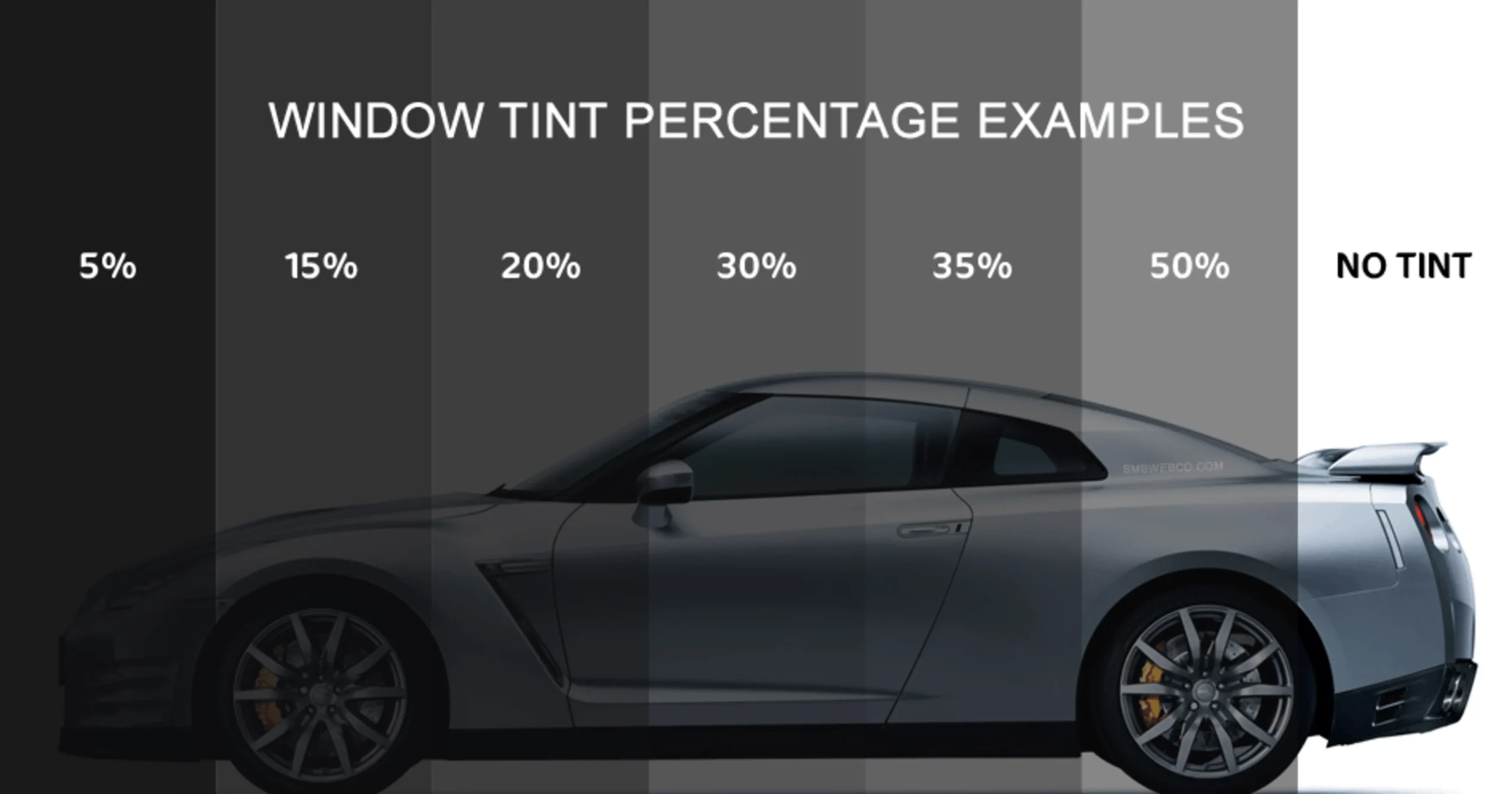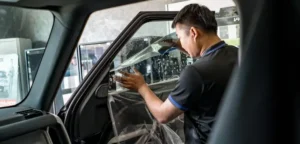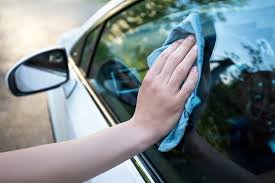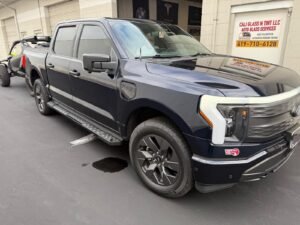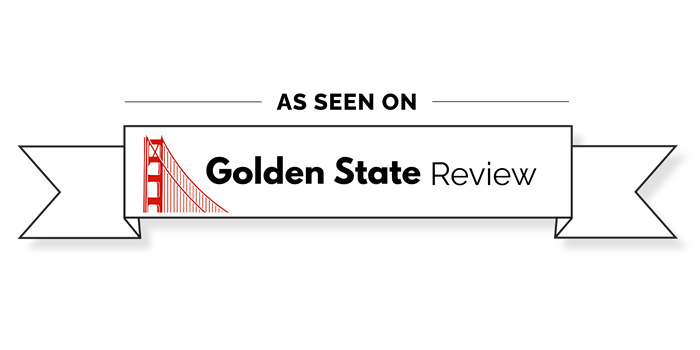The pursuit of the perfect, sleek aesthetic for your car often leads to one critical question: What is the darkest legal tint in California?
While the golden California sun makes high-performance window tint a necessity for comfort and UV protection, the state maintains some of the strictest window tint laws in the country. Before you choose a film, knowing these limits is essential to avoid fines, “fix-it” tickets, and the hassle of removing illegal tint.
At Cali Auto Glass & Tint in El Cajon, we guarantee compliance. Here is a clear breakdown of what is and is not allowed under the California Vehicle Code.
Understanding VLT: The Key to Staying Legal
The foundation of all California tint laws is Visible Light Transmission (VLT).
VLT is the percentage of visible light that passes through your window and the installed tint film combined.
- Higher VLT% = Lighter Tint (More light passes through).
- Lower VLT% = Darker Tint (Less light passes through).
If a window must allow 70% VLT, it means that 70% of light must pass through, and the tint itself can only block 30% of light.
California Tint Limits, Window by Window
California Vehicle Code §26708 sets clear, different limits for each section of your vehicle’s glass.
1. Front Windshield
- Darkest Legal Tint: Only non-reflective tint is permitted on the top 4 inches of the windshield (often referred to as the AS-1 line).
- Below the 4-inch mark, no film that obstructs the driver’s clear view is permitted.
2. Front Side Windows (Driver & Passenger)
This is where the law is the strictest.
- Darkest Legal Tint: The front side windows must allow at least 70% VLT to pass through.
- The Reality Check: Because almost all factory glass already blocks 10-20% of light, any added film must be an extremely light, high-transparency film (often rated 80% VLT or higher) to keep the combined VLT above the 70% minimum.
3. Rear Side Windows and Rear Window
This is where you have maximum flexibility.
- Darkest Legal Tint: There is NO VLT RESTRICTION on back side windows and the rear window (behind the driver’s seat).
- The Bottom Line: You can legally install 5% VLT “Limo Tint“ on your rear windows.
- Mandatory Requirement: If you choose to tint your rear window, the vehicle must have functional dual side mirrors for safe rear visibility.
Other Important California Tint Regulations
VLT is not the only rule. To maintain legal compliance, you must also adhere to restrictions on reflectivity and color:
| Restriction | California Requirement |
| Reflectivity | Tint film cannot be more reflective than a standard, untinted window. Mirrored or metallic films are illegal. |
| Color | The use of red, blue, or amber tint colors is prohibited on any window. |
| Certification | The tint film manufacturer must certify the film as legal for sale in California. A reputable installer will always use certified film. |
Why Professional Installation Is Non-Negotiable
Attempting a DIY job or choosing an inexperienced installer can quickly lead to an illegal tint.
- The VLT Meter Test: Law enforcement uses a specialized VLT meter to measure your film. At Cali Auto Glass & Tint, we measure the VLT of your factory glass and precisely calculate the film needed to guarantee the combined reading stays above the 70% minimum on your front windows.
- Quality Film Performance: We exclusively use high-performance films like Ceramic Tint. These films deliver superior heat rejection and UV block (up to 99%) without needing to be illegally dark. A light, legally compliant ceramic film can often feel cooler inside your car than a cheap, dark film!
Avoid the fix-it ticket (which can cost $25 or more plus the cost of removal) by choosing certified expertise.
Get the Darkest Legal Look Today
Don’t guess with window tint laws. At Cali Auto Glass & Tint in El Cajon, we guarantee your installation will meet California’s stringent regulations, allowing you to maximize shade, comfort, and style legally.
Contact us today to find the perfect ceramic or carbon film that keeps you cool while staying 100% compliant with California law!

